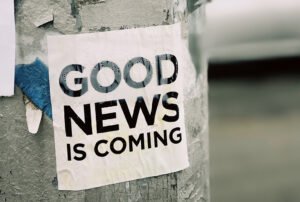
Nov. 3, 2015; Gallup
How do qualitative and quantitative data help in your fundraising? Here are some thoughts that are less about tools and more about how information can be used to help us communicate more effectively.
From data about nonprofits themselves to the data that nonprofits use to woo donors, we have no dearth of information about the nonprofit relationship with, well, information. The road to “big data” started with the information explosion in the 1940s, and libraries, governments, companies and nonprofits have played catch-up ever since. In the past few years in particular, as web tools become increasingly accessible, data has been seen as the key to donations and impact.
NPQ has followed this trend closely. In this 2012 feature, Steve Boland discusses the utility of big data for the little nonprofit:
Big Data really just means multiple data sets that are cross-referenced and sortable, the purpose being to uncover more than any one data set can tell us. One of the things Big Data can do is help tell the story of how you plan to make a difference in your community.
Although storytelling has always been a part of marketing, as of late the term has become more entrenched with its big data counterpart, as described in this 2013 story by Jinna Halperin.
Sign up for our free newsletters
Subscribe to NPQ's newsletters to have our top stories delivered directly to your inbox.
By signing up, you agree to our privacy policy and terms of use, and to receive messages from NPQ and our partners.
But wrangling data and telling data-driven stories are generally not an end in themselves. This post from the consulting firm Gallup especially questions the abounding faith in simple quantitative metrics. In a B2B setting, data is meant to help companies “become irreplaceable to clients by helping them solve their biggest challenges and finding ways to succeed together. How to do this varies widely from client to client. But the answers usually aren’t evident from a spreadsheet or a customer experience management system alone.” For nonprofits, solving problems with data can be much easier for program impact, but a much tougher nut to crack when it comes to donors, who don’t usually express their desire to help as a problem to be solved—hence the even bigger impetus for nonprofits to understand their donors with words and not numbers.
Donor research with qualitative data can be daunting. However, not investing in this research type could be costly, as the truth about donor perspectives could otherwise be clouded. If we again look to Gallup’s B2B analysis, “The most meaningful, compelling insights are not always the most frequently mentioned responses. Qualitative data uncover individual perspectives that differ from the norm. These insights—from particularly thoughtful or futuristic-minded customers—can help B2B clients see opportunities for growth that they wouldn’t have gathered from a purely quantitative survey. Though qualitative data are not majority opinions, they can be incredibly valuable.”
We can come up with very simple examples of the value of qualitative data for nonprofits. First, you could think that donors don’t want your welcome package because you don’t get any feedback about how much people like them. Or you could be spending time and money on materials that “futuristic donors” would prefer to get by email. When conducting surveys, imagine basing fundraising decisions on simple numbers. If you ask people how likely they are to recommend your charity to a friend on a scale of one to ten, what does “one” mean? Or four, or eight? And what can you do about those numbers without more detailed answers?
In consumer research, the poles of quantitative and qualitative metrics are linked, respectively, to positivism, or the idea that consumer behavior can be scientifically predicted with data, and interpretivism, or an attempt to understand the act of consuming itself. But nonprofits generally have to meld these poles and use meaningful quantitative and qualitative to both persuade donors and communicate their impact and have no need to get heady with consumer theory to do so. The Nonprofit Technology Network (NTEN) has produced many reports on how nonprofits use data and has many free tools. A workbook called “Getting Started With Data-Driven Decision Making” and their worksheets for measuring outcomes outline further data considerations, such as where data comes from, who collects it, and how to make sense of it all.
Although we can’t always draw direct comparisons between B2B and the nonprofit world, the dichotomies of transaction/relationship and quantitative/qualitative are yet another tangled path that nonprofit communicators will continue to brave in the years to come as many sectors marry the best of modern and post-modern approaches in order to structure and give meaning to the exponential growth of data at our fingertips.—Amy Butcher













